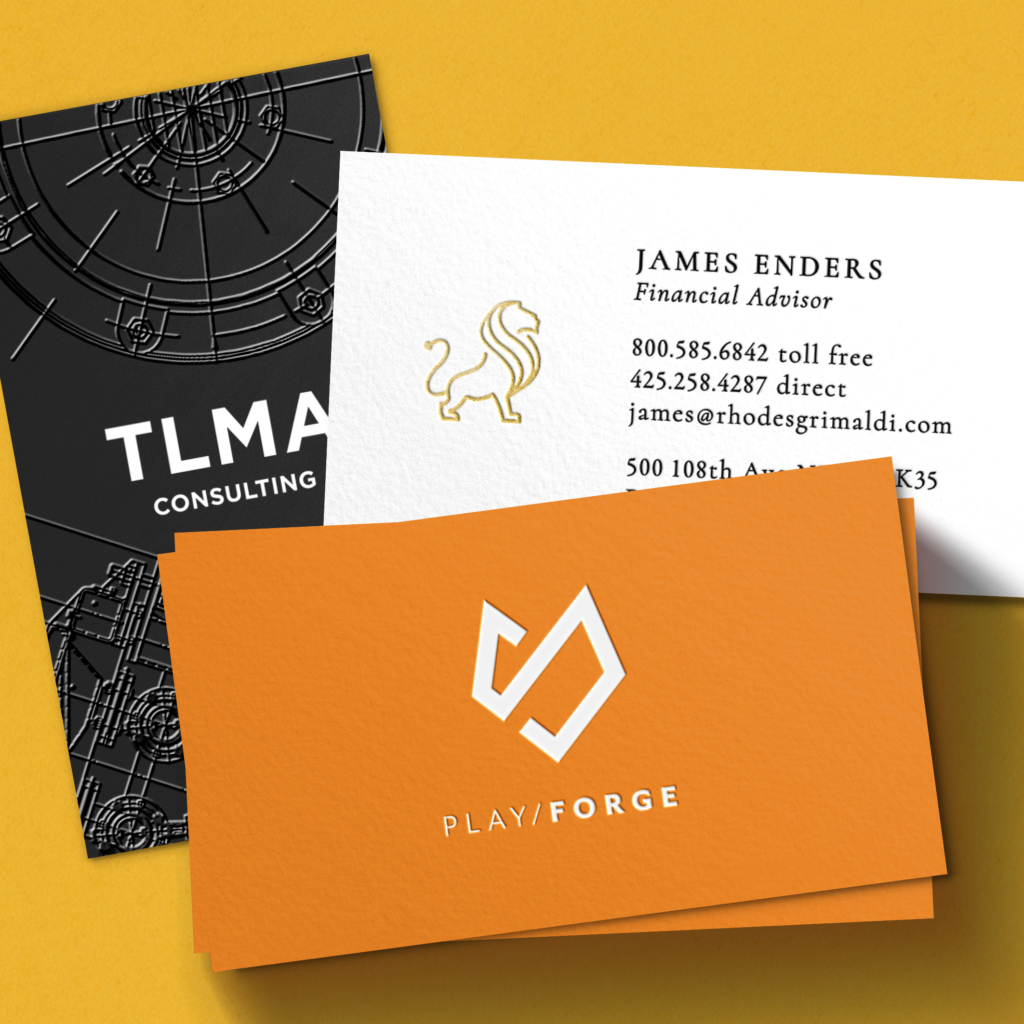Having spoken with many customers over the years, and it is apparent to me that there are a handful of common pitfalls when using your own design files to print business cards. We’ve boiled this down to the top 5 most common printing traps so no matter where you go for your printing needs, you will be armed with the knowledge necessary to optimize your print job.
1. Pantone or Spot Colors
Consumer research has shown that accurate color reproduction is by far the most common problem throughout the printing industry. The biggest culprit is usually the presence of Pantone or spot colors in your business card design files. These are typically highly customized colors that fall outside of the industry-standard CMYK 4-color printing process.
CMYK is a process whereby thousands of colors can be created by mixing various percentages of cyan (C), magenta (M), yellow (Y), and black (K). NexCards.com, as well as the VAST majority of printers in the market today, utilizes a CMYK process that is not compatible with spot colors.
A color shift often occurs when a CMYK business card printer attempts to print a spot color. Stick with CMYK colors, or if you absolutely must have Pantone colors on your cards, attempt to locate a printing company that specializes in this.
2. Black Backgrounds
A business card with a black background, if not set up properly, can turn out gray, blotchy, or over-saturated. Luckily, this problem has an easy solution – simply convert the black background within your design file to a rich black. Rich black appears the same as any other black, but it is much better for printing purposes.
A black background consisting of 100% black (C = 0, M = 0, Y = 0, K = 100) will most likely produce unexpected results. Instead, utilize a rich black, which incorporates other CMYK percentages into the mix. Our preferred CMYK mix for rich black is C = 40, M = 30, Y = 20, and K = 100 for silk cards and C = 60, M = 40, Y = 40, and K = 100 for most matte and glossy cards.
3. Borders
Artwork with borders is not recommended because a slight shift could occur during the trimming process. This could result in uneven or off-centered border lines.
This shifting possibility is an industry-accepted standard so basically, any artwork containing borders is a bit of a gamble. If you don’t like to gamble, remove the border from your custom business card files. Remember NexCards does full-bleed (borderless) printing and it’s wise to optimize your design to take advantage of this. Take your background right to the full bleed edge of the card.
4. Too Many Enhancement Features
Spot UV, embossing, foil stamping, scoring, perforation, and other bells and whistles fall into the enhancement feature bucket. Putting more than one of these features on a single card can cause flaws. Spot UV could bubble, foil could flake, or embossing could become fuzzy. It simply puts too much stress on the card stock. Always stick with a single enhancement, my favorite of which is Spot UV.
5. Hidden File Problems
Pay careful attention to the printer’s file specs. Here at NexCards.com, we check every single file that is uploaded to confirm that everything is in-spec and print-ready, but I’m sure there are plenty of printers out there who don’t bother.
Hidden problems include things such as transparencies, overprint, and embedded fonts. No matter where you go to have your business cards printed, always flatten your files, turn off overprint, and outline any embedded fonts.
Conclusion
Hiring a business card printer (especially us!) for your custom business cards is an excellent idea, and following my advice will eliminate 99% of any and all potential problems that might creep up during the production process.









